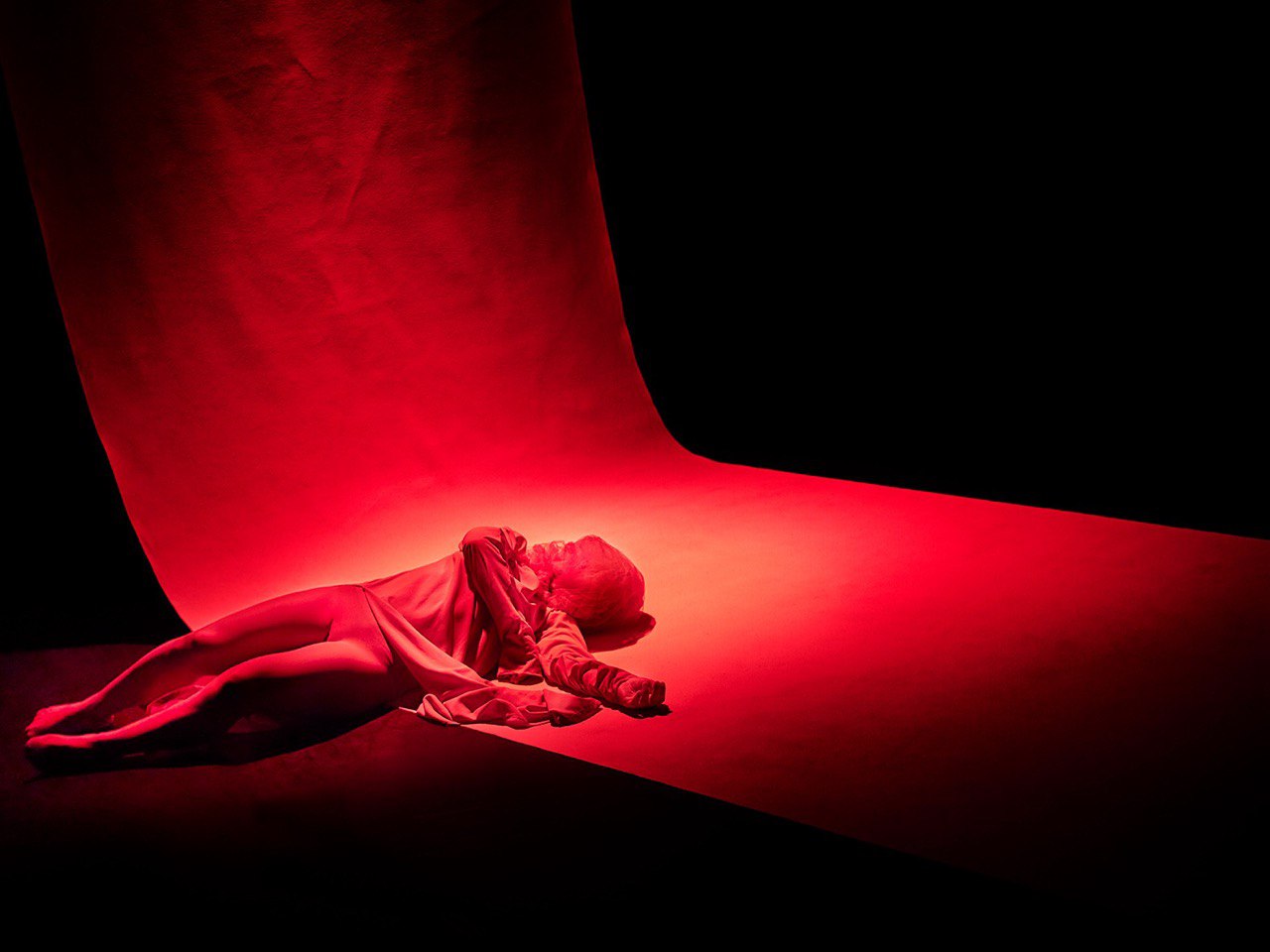His face is covered, erased, or perhaps amplified within this costume, which is the reverse of identity, smoothing out unevenness and roughness.

Arsura - ph. Daniele Casadio, Dancer: Rhuena Bracci
An indistinct figure appears in the shadow that still lingers, between the shimmer anticipating the intensity of an incoming red light. It emerges as if from nothing. We cannot yet perceive its identity, but rather the jointed nature of a body in motion, moving without a center. The clearer and vaster the space becomes, the smaller the dancing figure appears. Yet not in intensity—only in the relation between motor patterns and the surrounding space. Something seems to persistently want to remain hidden: while it exposes itself and comes alive in the time of action, something else seeks to interpose itself and desert presence. Creating a burning, a dark tension, a heat immersed in the darkness. This is Arsura by gruppo nanou, conceived and choreographed by Marco Valerio Amico and Rhuena Bracci, performed by the latter. Her face is covered, erased, or perhaps amplified within this costume (designed together with Arianna Gasparotti and Alberto Groja), which is the reverse of identity, smoothing out unevenness and asperities. Throughout the piece, there is a continuity of movement that forbids any distraction, any suspension of attention: the flowing and streaming, in the red, the darkness, and the brief, intense blue of these material lights, expand choreographically far beyond dance itself and the moving body. It is, in fact, a decentering of the body as the dominant choreographic model, and an attempt (which is the very history of this Ravenna-based company, now celebrating its twentieth anniversary and truly deserving recognition) to embrace multiplicity through new compositional paradigms and stage devices. The soundscape is equally a generative constellation: it gathers the vast intensities of Ryoji Ikeda, “a sampled sound of a broken neon light by Roberto Rettura, co-founder of Nanou,” and a track by the Chromatics, “used in the first episode of the third season of Twin Peaks as the closing music” (as Amico tells me). Yet everything here converges in that final, prolonged silence, a mute suspension that defers the end, creating a temporal threshold that is indeed still, blocked, extinguished—yet powerfully captivating.